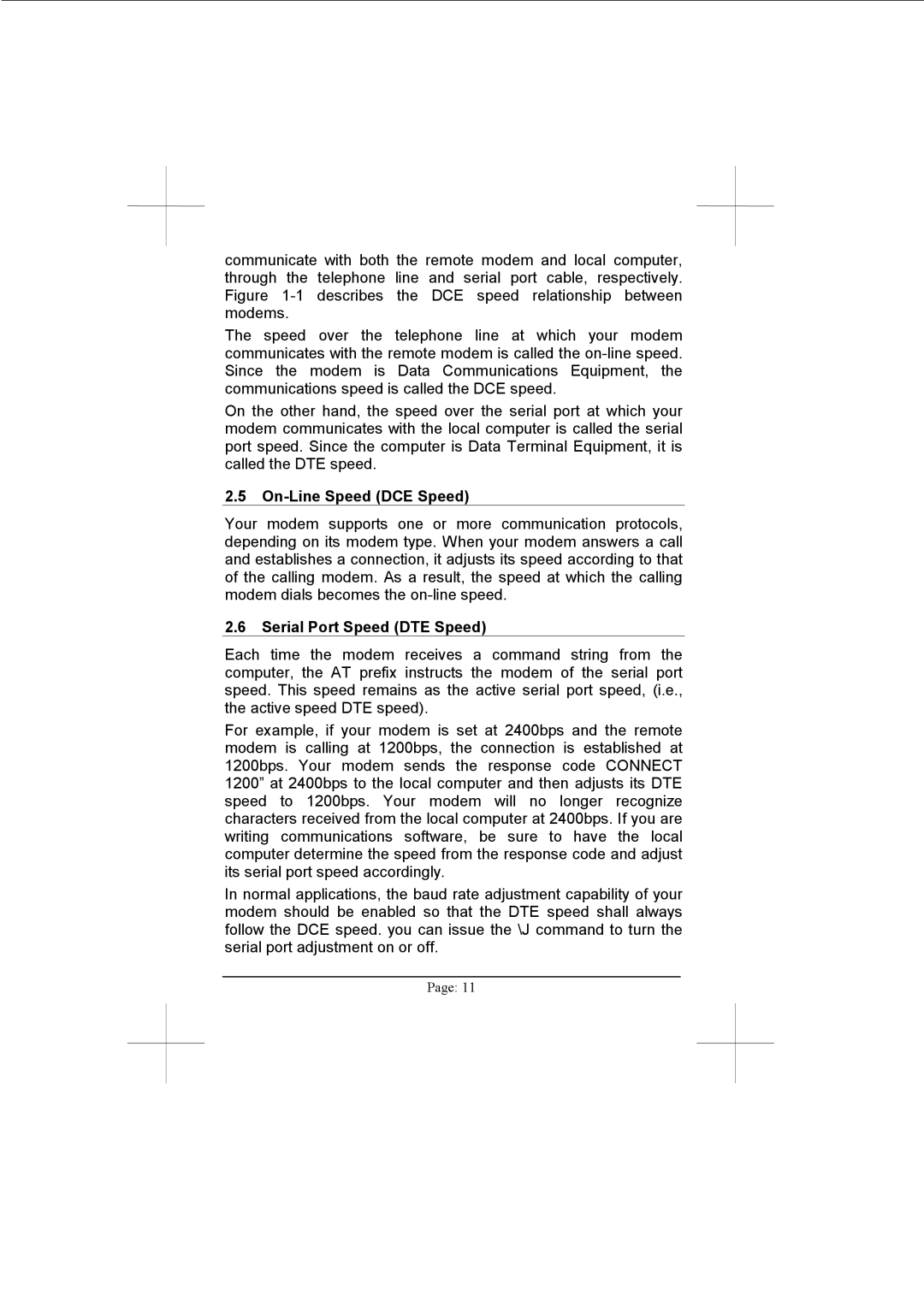
communicate with both the remote modem and local computer, through the telephone line and serial port cable, respectively. Figure
The speed over the telephone line at which your modem communicates with the remote modem is called the
On the other hand, the speed over the serial port at which your modem communicates with the local computer is called the serial port speed. Since the computer is Data Terminal Equipment, it is called the DTE speed.
2.5On-Line Speed (DCE Speed)
Your modem supports one or more communication protocols, depending on its modem type. When your modem answers a call and establishes a connection, it adjusts its speed according to that of the calling modem. As a result, the speed at which the calling modem dials becomes the
2.6Serial Port Speed (DTE Speed)
Each time the modem receives a command string from the computer, the AT prefix instructs the modem of the serial port speed. This speed remains as the active serial port speed, (i.e., the active speed DTE speed).
For example, if your modem is set at 2400bps and the remote modem is calling at 1200bps, the connection is established at 1200bps. Your modem sends the response code CONNECT 1200” at 2400bps to the local computer and then adjusts its DTE speed to 1200bps. Your modem will no longer recognize characters received from the local computer at 2400bps. If you are writing communications software, be sure to have the local computer determine the speed from the response code and adjust its serial port speed accordingly.
In normal applications, the baud rate adjustment capability of your modem should be enabled so that the DTE speed shall always follow the DCE speed. you can issue the \J command to turn the serial port adjustment on or off.
Page: 11
